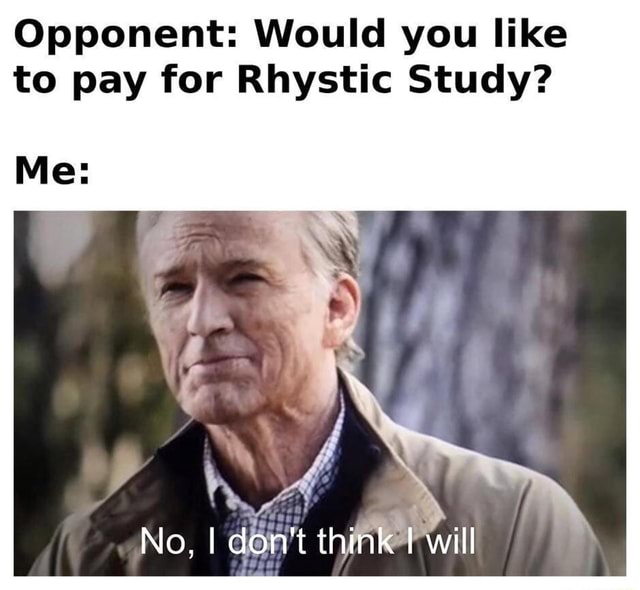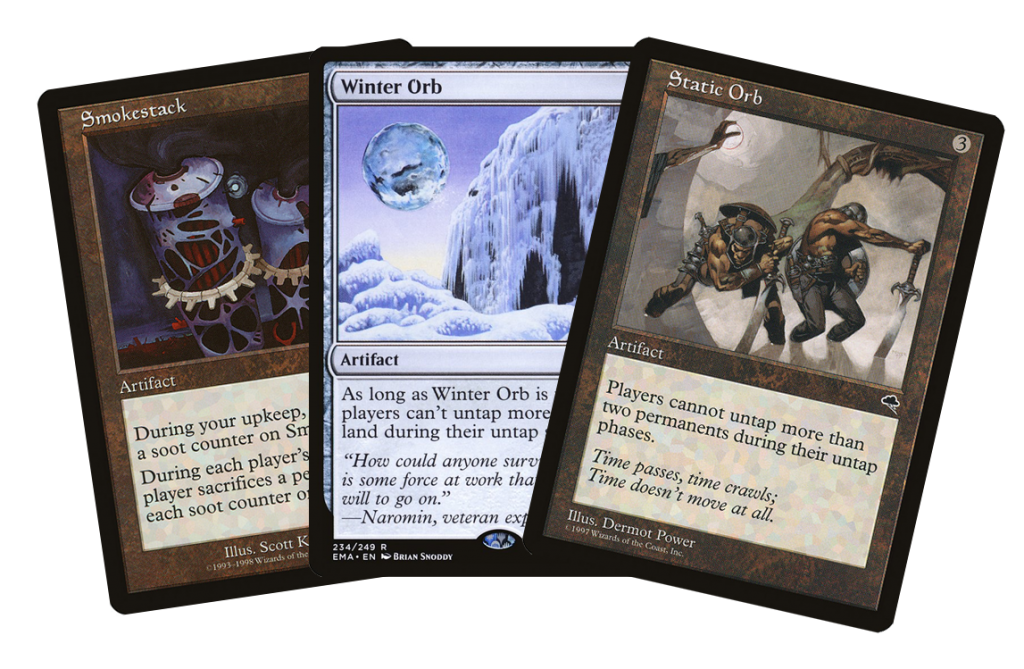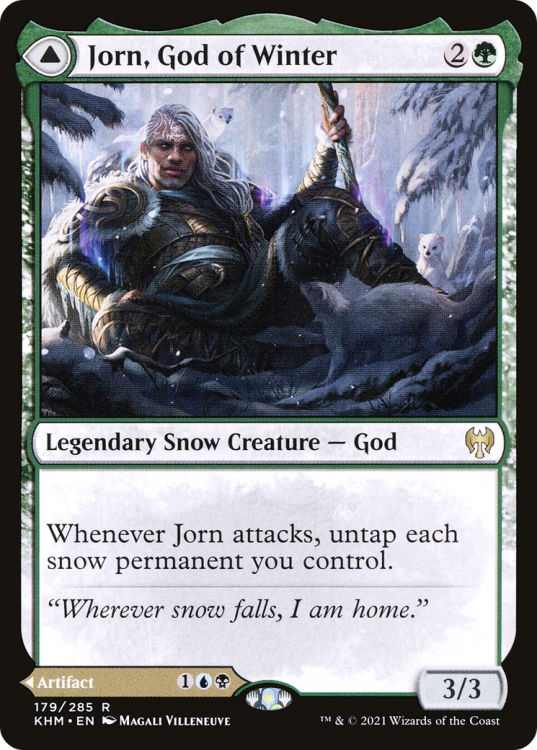Welcome back to our broader series on general tactics and strategy in Commander! Back in our 101 article on Winning a Negative Sum game we promised this follow-up three weeks ago, then we got sidelined by the release of Modern Horizons 2 and our review of the set. This week we’re back talking about another key topic for playing Commander: Resource Disparity.
There are a couple of ways to generate resource disparities in commander, and many decks function around them. The most pervasive are probably so-called “stax” effects, named originally after the card Smokestack. Smokestack forces players to sacrifice permanents, but due to the timing of the upkeep your opponents will always be forced to sacrifice more permanents than you. Finally, if you want the beatings to end, just improve morale, er sacrifice your own Smokestack to itself.
Let me Stax you a question…
In general, the stax effects generally make something impossible or cost more, and it’s something that the player who owns the effect doesn’t want to do or has way to get around. Stax decks put powerful inhibitory effects into play that either asymmetrically affect the caster or else are symmetrical effects that the deck is designed to play around. Winter Orb, Stasis, and Static Orb stop players from untapping. The controlling player may have Urza, Lord High Artifcer to tap them for mana and negate their effects, or Wilderness Reclamation to untap anyway or additionally, or an Unwinding Clock, or may generate a winning board state then play such a stax effect to prevent opponents from doing anything about it.
Rule of Law, Arcane Laboratory, Archon of Emeria, and Eidolon of Rhetoric all stop players from casting more than one spell per turn, Ethersworn Canonist and Deafening Silence have similar effects but allow casting as many artifacts and creature spells as you desire, respectively. You can get around these spells by putting things into play from your graveyard, or by various “put into play” effects, such as Sisay, Weatherlight Captain, or by casting spells on other players turns, either using instants and triggering off of them, such as with Curiosity on Vial Smasher, the Fierce, or by simply giving your spells flash via something like Vedalken Orrery or Leyline of Anticipation.
The easiest stax effects to leverage are the ones that simply effect your opponents. Aven Mindcensor stops your opponents, but not you, from searching your library. Opposition Agent goes one step further, letting you control them during the search.
There are also a number of effects that do something for every player, but if you couple that with a stax type effect, it has an asymmetrical board impact, and often a very powerful one. One of the more common deck archetype is Opus Thief, which relies on using cards that stop your opponents from drawing, and coupling that with a spell that forces everyone to discard and draw a lot of cards. Resolving a Wheel of Fortune with a Hullbreacher on the table is generally a game-winning event.
Nothing is certain in Magic, except Death, Taxes, and getting land-screwed.
Tax effects are generally those that simply make things cost more – though this cost isn’t always measured in mana. These can range from Vryn Wingmare to Mana Breach, but they function much like a normal stax effect, though usually by adding a cost to casting spells or activating abilities, and generally this cost is coupled to the controlling players deck being built to either pay the tax or avoid it.
There are also a few cards that are extremely noteworthy that include taxes and a benefit to you: Rhystic Study and Smothering Tithe both force your opponents to pay when they cast or draw, or you get to draw or get a treasure. Such effects force your opponent to choose to either give up resources of their own or give resources to you. These cards tend to have a good payoff because, in simple terms, each of your opponents is probably selfish. The logic generally plays out like a prisoner’s dilemma, where players end up making decisions to screw everyone over equally rather than cooperate. So the conclusion players arrive at is ultimately: If I pay the tax, then the Rhystic Study player doesn’t draw, but I don’t get to cast another spell. But if I do that, and the other two players do let him draw, they’ll all be ahead of me. If I don’t pay the tax, and nobody pays the tax, he’ll get to draw a lot of cards, but I won’t be any worse off than any of my non-rhystic study opponents, so I might as well not pay the tax. It’s a fun variant on the prisoners’ dilemma, except you’re all trapped in here with my Rhystic Study.

The end result is that the player holding Rhystic Study benefits pretty heavily thanks to the negative-sum nature of Commander games, making it an incredibly powerful effect.
When to play Resource Denial Effects
Before we dive into building around Stax, Tax, and other resource lock/denial effects, it’s worth noting that these aren’t an “all-the-time” effect to build around. Many players find resource denial and effects that prevent them from operating to be pretty unfun and running a Stax deck will almost certainly make you the main villain of the game you’re in if you’re playing in more casual environments. While these are powerful – and legitimate – strategies to run in Commander, it’s worth gauging your playgroup to get a feel for how they’ll respond.
There’s also the reality that stax effects often provoke a bad threat response. Many players are focused on what they are doing, and what they are not doing. If you drop say, rule of law, against a deck that wants to cast lots of spells every turn, the player may simply choose to blow up your rule of law. This may actually enable, say the player to his left, to win the game, because the rule of law effect was the thing stopping that player from casting Thassa/Consult in the same turn. There are also players who don’t treat each game as an isolated event. They don’t want to play against your stax deck, so they will go out of their way to make the game miserable for you as well, and hope that you simply won’t pull the deck out to play.
So stax effects are generally more welcome, and more effective, at more competitive tables, and even there you should expect to occasionally be punished more than you should for playing them.
Building Around Tax and Stax
One of the best things about Stax effects is that there are a large number of key Stax cards that are artifacts, and can be put into any color deck. We’ve already mentioned Smokestacks, Static Orb, and Winter Orb but Lodestone Golem, Sphere of Resistance, Trinisphere, and Tanglewire all fall into this category as well. These can also combine with each other – Tanglewire can be used in concert with other cards to effectively grind the game to a halt for a few turns. This is because of how upkeep triggers work; tangle wire will come into play and force each of your opponents to tap 4 permanents on their turn. On your turn you put the tap effect on the stack then the fading effect. Remove a counter, then you’ll only have to tap three permanents, because by the time the effect resolves only two three counters remain, but Tangle wire is itself a permanent, so you can tap it. Effectively you tap 2 permanents, and your opponents tap 4 each, 2 for 12.
In addition to the Stax pieces, a Stax deck also needs the pieces to avoid the mess it creates. For Winter Orb, this will be artifact and creature sources of mana that continue to untap regularly, or a way to tap the Winter Orb so that it’s not untapped when your turn rolls around, and you aren’t effected by it, like Urza, Lord High Artificer or Derevi, Empyrial Tactician or the new Galazeth Prismari (there’s no rule that says you can’t generate mana you can’t spend, and if you think this is a hint about a forthcoming article, then, you’re right) A Stax deck will also need a win condition, since it’s not enough to merely grind the board to a halt. Stax decks also need a way to actually get their soft-lock into play, and that typically means a suite of tutors and other card draw to ensure you can find the pieces you need.
This is a really important point: Please don’t just play stax cards for no good reason. Personally, I hate decks that do things like this almost as much as I hate chaos decks. I’m perfectly fine with a deck that has a way to win via playing stasis or scrambleverse but just playing it for no reason is pretty rude.
Sideline Stax Effects
Sometimes you can just fit some stax pieces into your deck. Not running a lot of artifacts in a monogreen deck? Include Collector Ouphe, Karn, the Great Creator and Null Rod, and maybe include a Bane of Progress. Deck is mostly creatures, with a few ramp spells or buff spells? Include the Rule of Law suite, or at least the hatebear versions. Don’t run any recursion or use your graveyard? Just throw in a Rest in Peace. This card can singlehandedly destroy entire decks, and some have no way to deal with it.
My Stax aren’t doing anything…
I wasted my turn getting an Aura of Silence into play and nobody is casting any artifacts or enchantments!
There’s a concept in statistics called survivorship bias, the idea being that we only measure things that survive. It’s hard to measure the things that aren’t happening, but things may be not happening because of what you did. Maybe they aren’t casting any enchantments or artifacts because you have Aura of silence in play. Maybe your Opposition Agent is stopping them from casting search spells. Sure it would be ideal if you got to steal the card they search for, but forcing people to not search, or to not cast artifacts, or to not attack, those things are good too.
Stax Decks We’ve Built
Over the last year we’ve built a number of Stax decks for older Commander Focus articles. If you’re looking for inspiration or a few different approaches, consider these three decks, which use different stax engines and color combinations to accomplish similar ends.
Jorn, God of Stax
This deck takes advantage of Jorn’s untapping ability to get around the detrimental effects of Winter Orb, Trinisphere, and Static Orb. The basic game plan is to ramp out and try to get Jorn on turn 2 so he can attack on turn 3 for an untap, and leverage your untap ability to not care too much about the lack of untapping going on. All by himself, Jorn is a powerful engine for getting around Stax effects that lock the board up by removing the ability to untap permanents.
Slay Queen Marchesa
This deck is focused on generating death triggers, enters battlefield triggers, and creatures just generally living and dying. While it can set up a scenario where players instantly die, it’s rather hard to pull off. Instead, it focuses on slowing the game down to a grind fest, where it has an advantage through recursion and global triggers. The main stax effect in the deck is rule of law and it’s ilk, because generally the deck is only going to cast 1 or 2 spells a round anyway, and after some initial ramp, it won’t be trying to resolve a lot of spells at once, and it has creatures with mana costing activated abilities, to make sure that potential mana sources aren’t wasted.
Kenrith, Death by Taxes
This is a full on tax deck, built without a particularly linear gameplan, but rather looking to drop powerful stax effects that are mostly asymetric, like Aven Mindcensor, Hull Breacher, and Smothering tithe, and leverage the reasource disparity and Kenrith’s absurd toolboxy nature to win the game. This is mostly a varient on Opus Thief, a deck which wins by resolving a wheel effect with a draw denial effect on the board, but has the added advantage of green in it’s color identity for ramp, and ends the game with a labman effect and consult, or else simply generating infinite mana and drawing yourself or your opponents out.
Have any questions or feedback? Drop us a note in the comments below or email us at contact@goonhammer.com.




